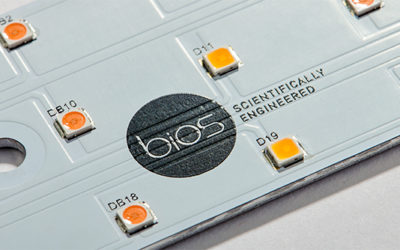You may already know about the critical role that circadian rhythm plays in our health and performance, and how it takes its cues from the sun. You may already understand that our built environments insulate us from these cues, compromising our biological needs. Have you considered implementing lighting solutions that maintain our natural circadian clocks?
In his recent talk at CHPC Housing Innovation Lab Basements, Robert Soler, VP of Biological Technology & Research at BIOS Lighting, describes how builders can design indoor environments that support our circadian system rather than compromise it. Read on to get the key takeaways!
The Importance of the Circadian Rhythm: A Brief Review
The circadian rhythm is a pervasive part of all biology, which is timed with the sun.
Each cell has its own circadian schedule dictating when it performs specific functions, and 43 percent of gene expression is circadian. Thanks to the circadian clock, there is strategic timing for the many processes in our bodies, and disrupting this timing disrupts proper function in every way — including biologically, physiologically, and neurochemically. While modern society has brought on many incredible advancements, it has also thrown us into a lifestyle that has broken our much-needed relationship with the sun and — in turn — has compromised our circadian system.
Spending much of our time indoors, we are isolated from the right kind of light our bodies need during the day, and we get too much of the wrong light at night when our bodies should be winding down for sleep. Among its many consequences, this improper light exposure disrupts our sleep-wake cycle and causes inconsistent sleep schedules. This is a major problem. Variation in sleep timing has been shown to be the best predictor of poor academic performance. It has also been linked to many diseases — from obesity and various forms of cancers to ADHD and Alzheimer’s — which have become more prevalent as sleep loss and inconsistency has increased over time.
Biological Design with Circadian Lighting
A recent discovery of a photoreceptor in the human eye has bolstered our understanding of our circadian biology. This photoreceptor projects to a different, non-visual part of the brain where our circadian clock is located and is highly sensitive to the “blue-sky” wavelength of the sun’s light. Circadian lighting such as BIOS SKYBLUE® technology provides the maximum good blue light with minimal bad blue light. It’s the right spectrum on the proper curve to regulate circadian rhythm. On the contrary, current LED technology has a trough in the good blue light region and peaks in the bad blue light region. Interestingly, another photoreceptor has just been discovered that is twilight-specific, underscoring the importance of twilight on our biology and opening new avenues for even further technological advancements.
Daily exposure to windows helps, but it may not be enough. It is important that the light penetrates the indoor space where people are sitting and working. Not all windows achieve this. The depth of daylight penetration equals twice the window head height. So if you are not located in the right spot by the window, you are not getting the light exposure you might think you are.
Get the Benefits of the Outdoors with SKYBLUE® Lighting Technology
At BIOS, we take a “biology first” approach, so we don’t do anything unless there’s a biological mechanism behind it. Having looked at the spectral power distribution of what comprises the outdoor environment, and the impact of different wavelengths of light in daylight — from the end of day cues, to the circadian response, to visual efficiency and healing — we noticed that current LED lighting fails to match this distribution. We saw an opportunity to create technology that re-appropriates the energy in the circadian response, moving it into the proper wavelengths and providing key biological wavelengths into the built environment, while still creating that bright white light that people prefer in their spaces.
The result was our revolutionary technology: SkyBlue® lighting. SkyBlue® can be implemented into any existing LED to transform artificial light into natural light. This technology provides a specific wavelength of light that stimulates circadian biology to drive healthier sleep patterns — and healthier people. While other lighting technologies — like color tuning — have attempted to recreate sunlight by raising and lowering brightness levels throughout the day, they fail to communicate with the body on a biological level. SkyBlue® is true biological light. Learn more about BIOS SkyBlue® technology here.


